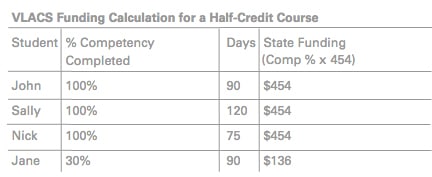This post was first published on WISE ed.review.
In 2008, in the book Disrupting Class, Clayton Christensen, Michael Horn, and Curtis Johnson made the bold prediction that by 2019, 50 percent of all high school courses in America would be online. Seven years later, this prediction appears on target, if not too conservative an estimate. It’s not surprising, then, that we’ve likewise seen dramatic growth in private investment in EdTech as demand for online and blended learning solutions grows: in 2014 alone, U.S. EdTech companies raised $1.36B in 201 rounds from more than 386 unique investors, according to analysis by EdSurge.
What all of this means for students, however, continues to depend on what school systems demand and where investors place their bets. Ideally, EdTech should serve as a tool that helps to actively personalize teaching and learning to students needs. By deploying new technology within new instructional models, educators stand to measure and target students’ needs and strengths with far greater precision than was ever possible in most analog classrooms.
But the rapid growth of the EdTech market alone will not inevitably give rise to more personalized learning models that drive student outcomes. Some online tools may leverage technology to drive down the cost of delivering instruction by simply digitizing the traditional, factory-based model of education. For example, if traditional students merely watch recordings of lectures but are not assessed for understanding in a different manner, the traditional classroom—and its limited ability to support individual student’s needs—will remain intact.
How can we increase the likelihood that investments in EdTech enhance our ability to measure and cater to individual student mastery? For starters, funding mechanisms—both private and public—will need to embrace new principles that unlock, rather than reinforce, the factory-based model of education.
Private dollars: Patient capital to support disruptive innovation
There certainly have been unprecedented levels of private investment in education technologies over the past few years. Investors are excited about fast-growing pockets of the EdTech market such as assessment or online content, much of which are sustaining innovations relative to the existing education system. These investments will appear attractive because they reflect high growth, high yield pockets of the current education curriculum and testing market.
But we also need savvy investors—in the VC and philanthropic communities—to provide patient capital to support disruptive innovations in education. Disruptive innovations do not compete in the traditional market, but instead target pockets of nonconsumption and the low end of the market. By definition, these disruptive markets are small and harder to estimate at the outset. Firms pursuing a disruptive strategy may struggle to attract investors because as disruptors, they tend to get their starts in these smaller markets. However, disruptive innovations will be vital to moving toward a system that leverages technology to personalize—rather than merely digitize—education. Investors, therefore, should evaluate investments in disruptive innovations based on companies’ ability to make a profit in these distinct markets (i.e., to create a viable, cost-effective product within an albeit small market) rather than to grow quickly right off the bat. VC and philanthropic portfolios need not be dedicated entirely to disruptive innovations; however, investors should be aware of the possibility that they will need to use different metrics to assess sustaining versus disruptive opportunities in the EdTech space.
Public dollars: Fund outcomes not inputs
Even were we to witness more patient capital supporting disruptive innovations in private enterprise, however, the manner in which we structure public school funding will have major implications regarding what sorts of technology-enabled models take root, and the degree to which technology investments drive student outcomes. Currently, most education systems receive dollars based on inputs: typically, enrollment rates, attendance numbers, and instructional hours (or “seat time”) determine school funding formulas. This poses two troubling issues: first, simply funding inputs does not incentivize schools to structure the classroom around each student’s unique needs and strengths. Second, these incentives in turn shape the EdTech market. EdTech companies tend to respond to such incentives by maximizing upfront enrollment or licensing agreements, but are rarely held accountable for demonstrating their tools’ impact on student outcomes.
A better funding system would reward successfully driving individual student performance among both schools and EdTech providers. Take, for example, the manner in which the state of New Hampshire funds the Virtual Learning Academy Charter School, a statewide source for online learning opportunities. Because New Hampshire is one of few states to have gone fully competency-based, VLACS’s instructional model and funding model are contingent on students advancing—and being funded—only upon demonstrating mastery.
As VLACS CEO Steve Kossakoski said, “as a competency-based school we feel it is important that our funding is connected with the mastery of competencies, and not attendance or ‘seat time.’” The table below summarizes the basic formula through which VLACS receives state dollars for a “half-credit course.” The state funds VLACS on the basis of the percentage of material each student mastered. Note that each student mastered the competencies in each course at a different rate. The last student portrayed in the table decided to withdraw from the course after completing 30 percent of the competencies, which meant that VLACS would receive 30 percent of the funding for the half-credit course. This is just one example of how education systems might rethink funding in a manner that emphasizes outcomes over inputs.
In short, to drive toward high-quality personalized learning, we need to rethink both private and public funding streams. This will require more patient capital, more hard-nosed accountability based on outcomes, and a commitment to creating an education system in which the expanding EdTech market will grow with student outcomes as a priority.



